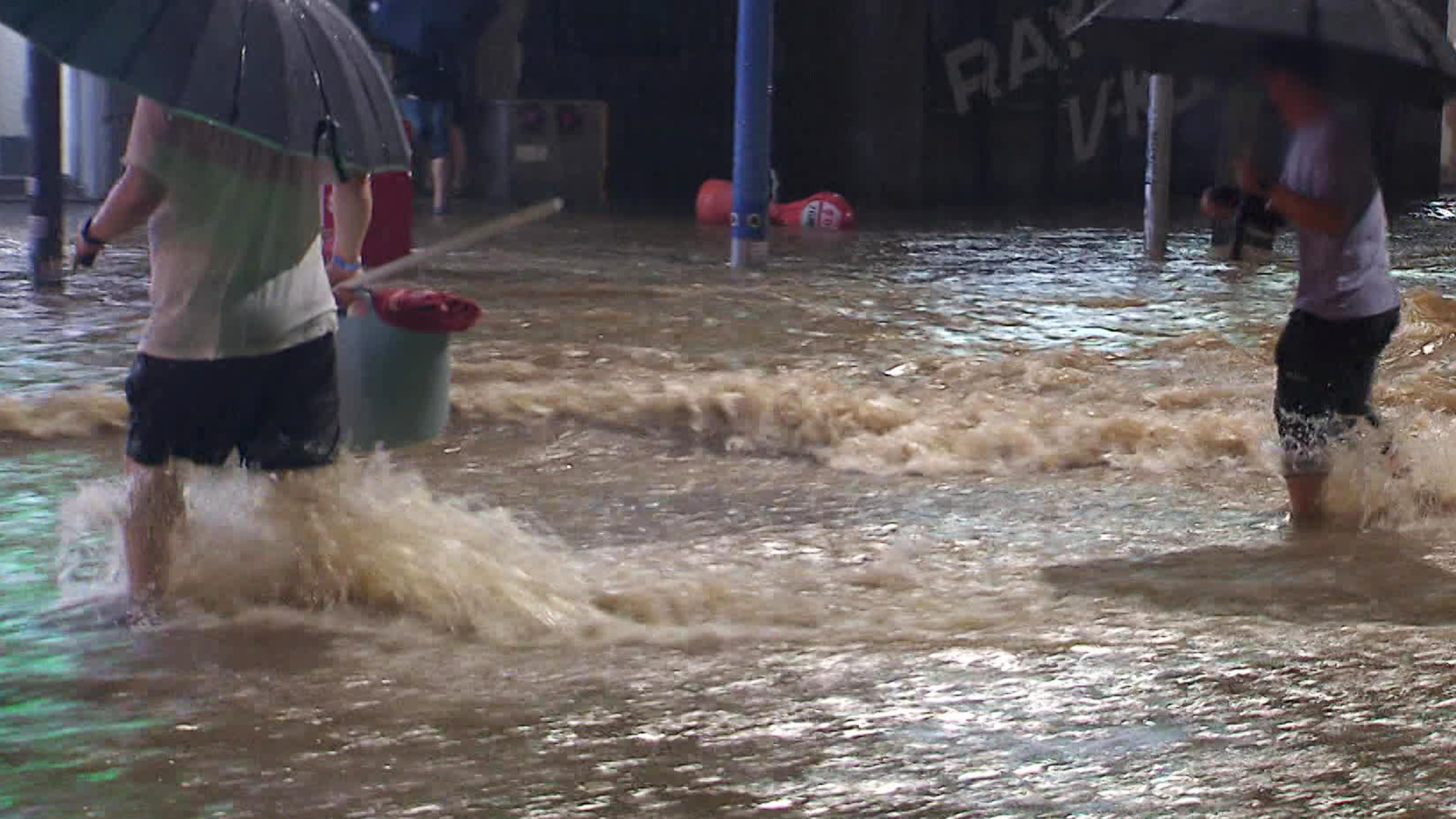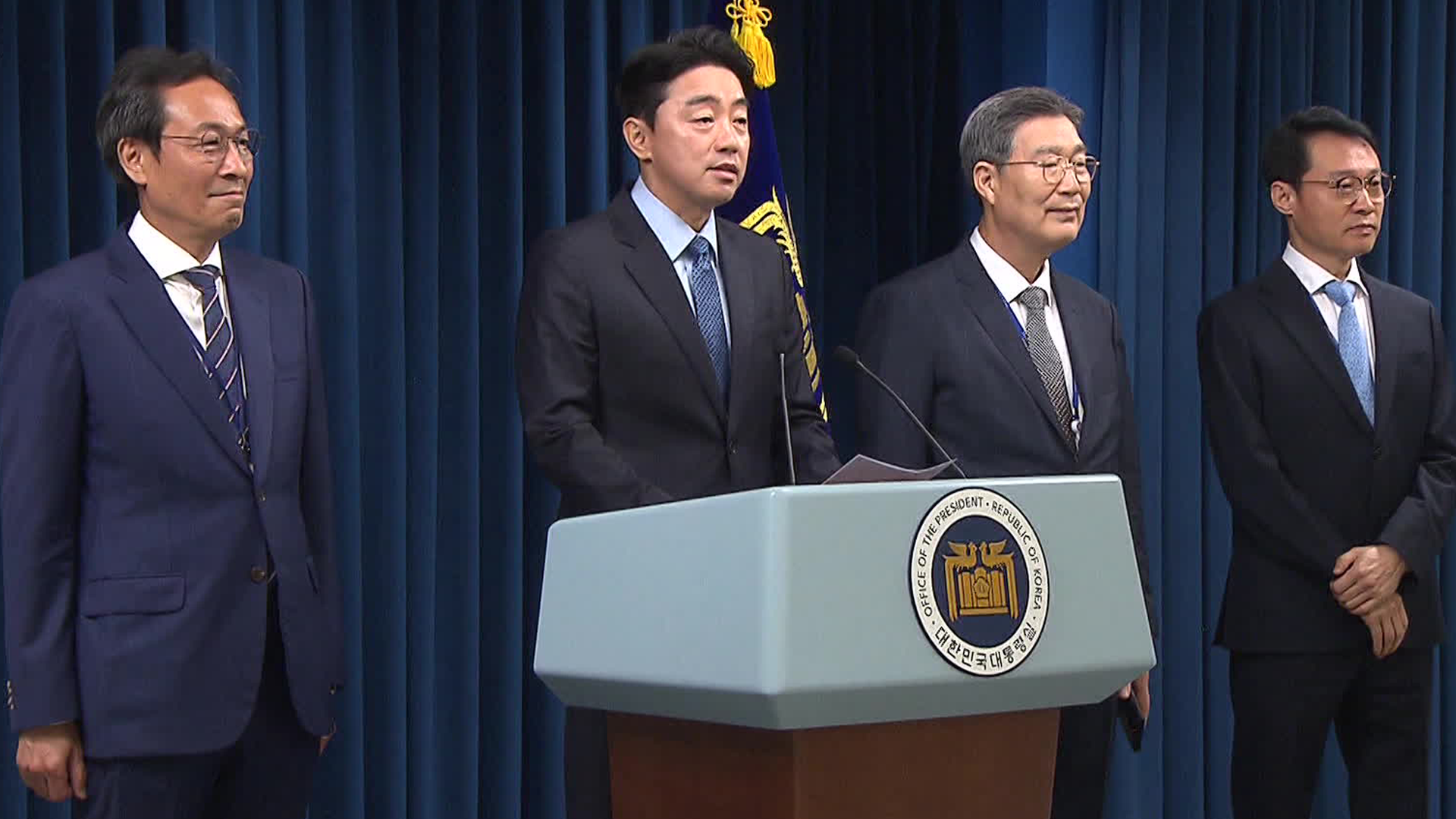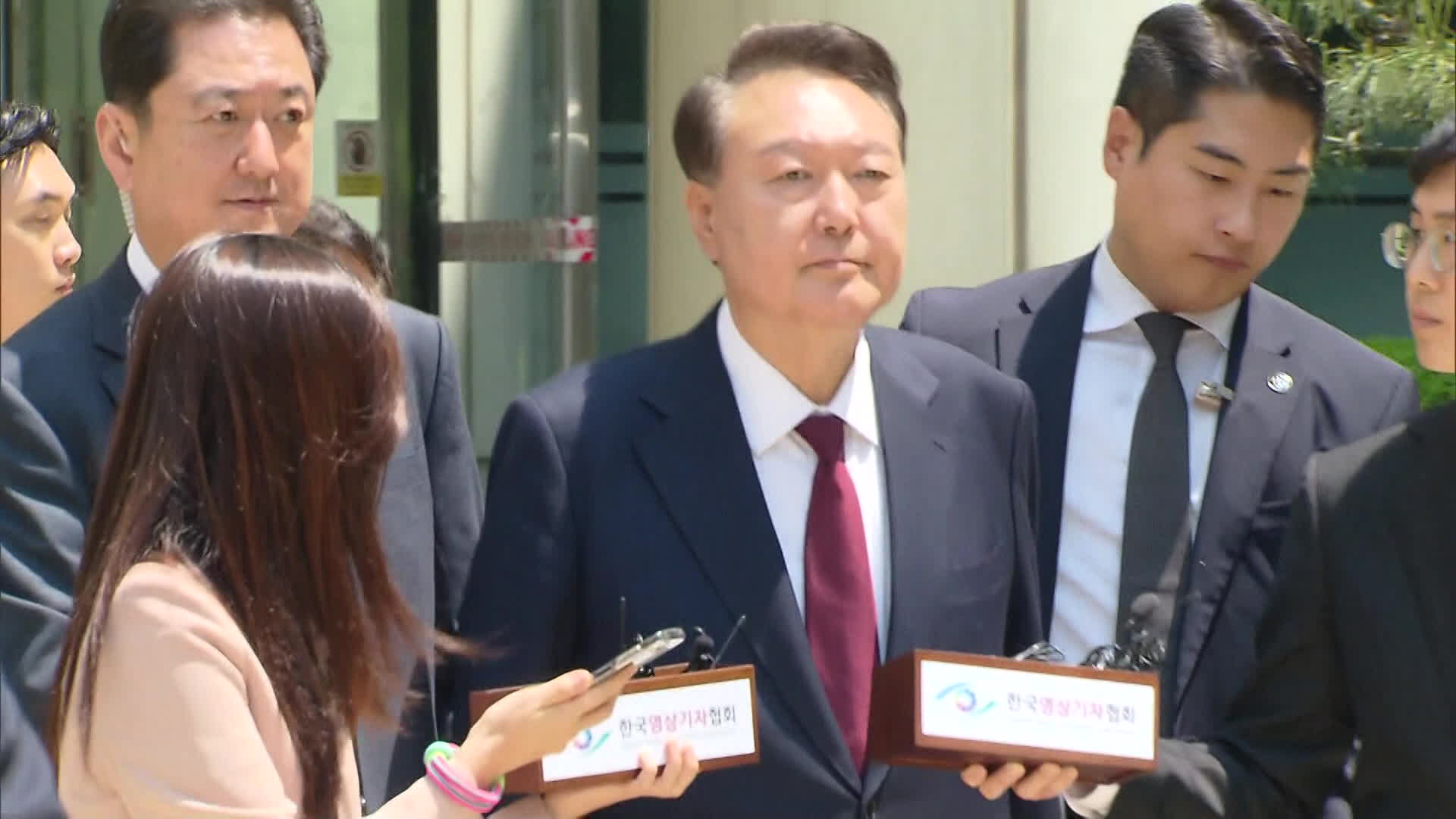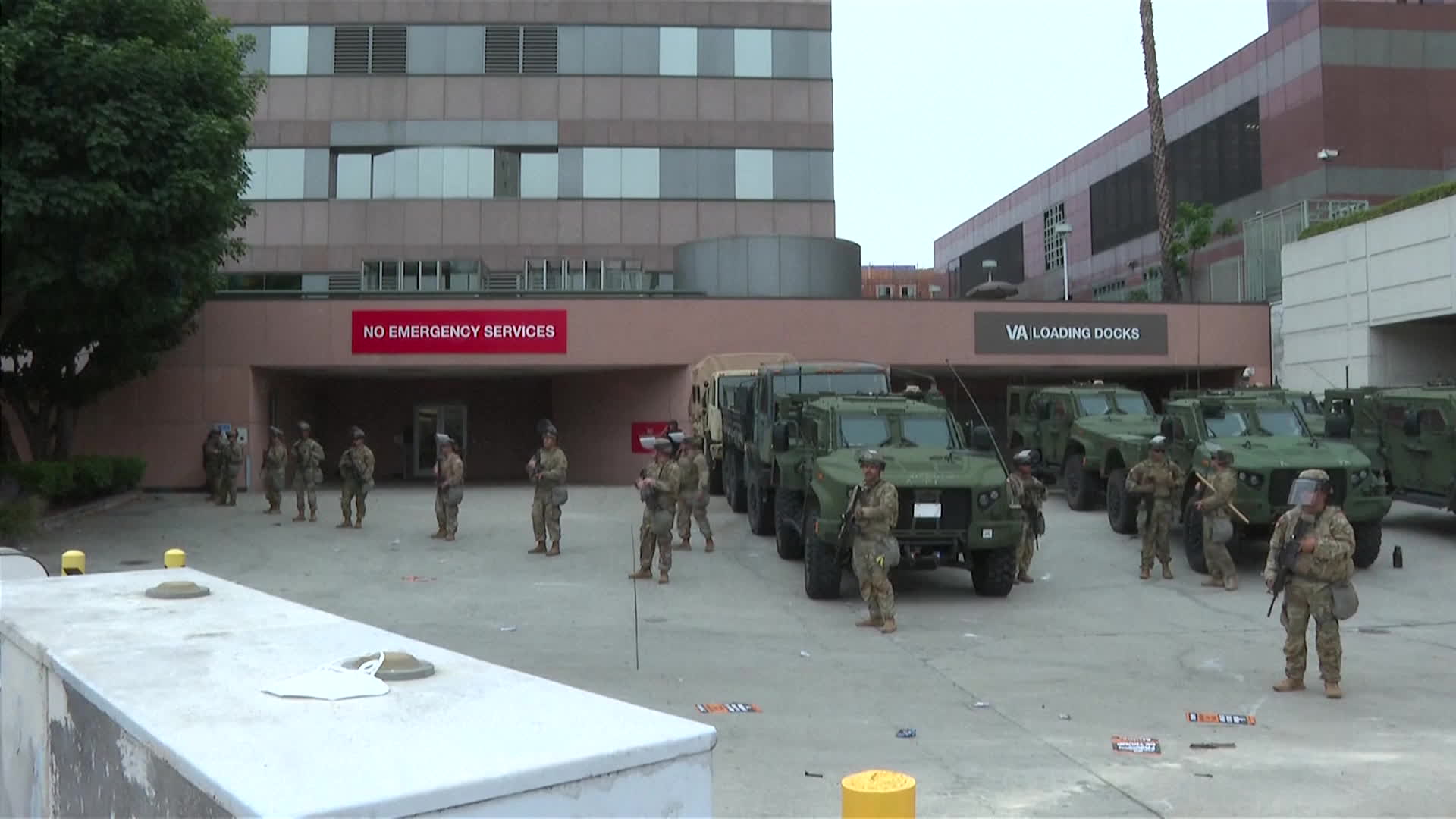[Anchor]
We vividly remember last summer when the roads were flooded to the height of car wheels and puddles formed throughout the city.
Artificial Intelligence (AI) has also warned about the risks of urban flooding.
It precisely pinpointed the high-risk areas for this year.
Lee Se-heum reports.
[Report]
With heavy rain exceeding 100mm per hour, asphalt roads turned into rivers.
Drivers abandoned their cars and sought shelter.
The rainwater that doesn't drain poured into the subway station like a waterfall.
Every year, there has been repeated criticism that asphalt and concrete surfaces in cities that cannot absorb rainwater are the cause of 'urban flooding' every year.
[Kim Hyung-soo/Professor, Department of Social Infrastructure, Inha University/Jun. 26, 2024/News9: "Urban areas, especially with a lot of impermeable surfaces, have a high runoff, so various methods to prevent flood damage should be applied in cities..."]
AI, which learned from flood damage over the past 20 years, reached the same conclusion as experts.
Researchers from POSTECH and Kyungpook National University created a 'flood risk map' by inputting over 180 flood data into four AI models to predict flood damage by region.
Two models with the highest prediction accuracy identified the same major cities like Seoul, Incheon, Busan, and Suwon as high-risk flood areas.
Analyzing the basis for the AI's judgment, 'the ratio of impermeable surfaces' and 'river areas' were identified as key risk factors.
[Lee Eun-mi/Department of Environmental Engineering, POSTECH: "A notable point is that among the various AI models, those with particularly high accuracy performance commonly rated factors related to cities to be particularly important."]
In the context of extreme rainfall increasing due to climate change, the researchers suggested that securing permeable areas that can absorb rainwater should be a priority in the urban development process.
This is KBS News, Lee Se-heum.
We vividly remember last summer when the roads were flooded to the height of car wheels and puddles formed throughout the city.
Artificial Intelligence (AI) has also warned about the risks of urban flooding.
It precisely pinpointed the high-risk areas for this year.
Lee Se-heum reports.
[Report]
With heavy rain exceeding 100mm per hour, asphalt roads turned into rivers.
Drivers abandoned their cars and sought shelter.
The rainwater that doesn't drain poured into the subway station like a waterfall.
Every year, there has been repeated criticism that asphalt and concrete surfaces in cities that cannot absorb rainwater are the cause of 'urban flooding' every year.
[Kim Hyung-soo/Professor, Department of Social Infrastructure, Inha University/Jun. 26, 2024/News9: "Urban areas, especially with a lot of impermeable surfaces, have a high runoff, so various methods to prevent flood damage should be applied in cities..."]
AI, which learned from flood damage over the past 20 years, reached the same conclusion as experts.
Researchers from POSTECH and Kyungpook National University created a 'flood risk map' by inputting over 180 flood data into four AI models to predict flood damage by region.
Two models with the highest prediction accuracy identified the same major cities like Seoul, Incheon, Busan, and Suwon as high-risk flood areas.
Analyzing the basis for the AI's judgment, 'the ratio of impermeable surfaces' and 'river areas' were identified as key risk factors.
[Lee Eun-mi/Department of Environmental Engineering, POSTECH: "A notable point is that among the various AI models, those with particularly high accuracy performance commonly rated factors related to cities to be particularly important."]
In the context of extreme rainfall increasing due to climate change, the researchers suggested that securing permeable areas that can absorb rainwater should be a priority in the urban development process.
This is KBS News, Lee Se-heum.
■ 제보하기
▷ 카카오톡 : 'KBS제보' 검색, 채널 추가
▷ 전화 : 02-781-1234, 4444
▷ 이메일 : kbs1234@kbs.co.kr
▷ 유튜브, 네이버, 카카오에서도 KBS뉴스를 구독해주세요!
- AI warns of urban flooding
-
- 입력 2025-06-09 00:57:23

[Anchor]
We vividly remember last summer when the roads were flooded to the height of car wheels and puddles formed throughout the city.
Artificial Intelligence (AI) has also warned about the risks of urban flooding.
It precisely pinpointed the high-risk areas for this year.
Lee Se-heum reports.
[Report]
With heavy rain exceeding 100mm per hour, asphalt roads turned into rivers.
Drivers abandoned their cars and sought shelter.
The rainwater that doesn't drain poured into the subway station like a waterfall.
Every year, there has been repeated criticism that asphalt and concrete surfaces in cities that cannot absorb rainwater are the cause of 'urban flooding' every year.
[Kim Hyung-soo/Professor, Department of Social Infrastructure, Inha University/Jun. 26, 2024/News9: "Urban areas, especially with a lot of impermeable surfaces, have a high runoff, so various methods to prevent flood damage should be applied in cities..."]
AI, which learned from flood damage over the past 20 years, reached the same conclusion as experts.
Researchers from POSTECH and Kyungpook National University created a 'flood risk map' by inputting over 180 flood data into four AI models to predict flood damage by region.
Two models with the highest prediction accuracy identified the same major cities like Seoul, Incheon, Busan, and Suwon as high-risk flood areas.
Analyzing the basis for the AI's judgment, 'the ratio of impermeable surfaces' and 'river areas' were identified as key risk factors.
[Lee Eun-mi/Department of Environmental Engineering, POSTECH: "A notable point is that among the various AI models, those with particularly high accuracy performance commonly rated factors related to cities to be particularly important."]
In the context of extreme rainfall increasing due to climate change, the researchers suggested that securing permeable areas that can absorb rainwater should be a priority in the urban development process.
This is KBS News, Lee Se-heum.
We vividly remember last summer when the roads were flooded to the height of car wheels and puddles formed throughout the city.
Artificial Intelligence (AI) has also warned about the risks of urban flooding.
It precisely pinpointed the high-risk areas for this year.
Lee Se-heum reports.
[Report]
With heavy rain exceeding 100mm per hour, asphalt roads turned into rivers.
Drivers abandoned their cars and sought shelter.
The rainwater that doesn't drain poured into the subway station like a waterfall.
Every year, there has been repeated criticism that asphalt and concrete surfaces in cities that cannot absorb rainwater are the cause of 'urban flooding' every year.
[Kim Hyung-soo/Professor, Department of Social Infrastructure, Inha University/Jun. 26, 2024/News9: "Urban areas, especially with a lot of impermeable surfaces, have a high runoff, so various methods to prevent flood damage should be applied in cities..."]
AI, which learned from flood damage over the past 20 years, reached the same conclusion as experts.
Researchers from POSTECH and Kyungpook National University created a 'flood risk map' by inputting over 180 flood data into four AI models to predict flood damage by region.
Two models with the highest prediction accuracy identified the same major cities like Seoul, Incheon, Busan, and Suwon as high-risk flood areas.
Analyzing the basis for the AI's judgment, 'the ratio of impermeable surfaces' and 'river areas' were identified as key risk factors.
[Lee Eun-mi/Department of Environmental Engineering, POSTECH: "A notable point is that among the various AI models, those with particularly high accuracy performance commonly rated factors related to cities to be particularly important."]
In the context of extreme rainfall increasing due to climate change, the researchers suggested that securing permeable areas that can absorb rainwater should be a priority in the urban development process.
This is KBS News, Lee Se-heum.
-
-

이세흠 기자 hmm@kbs.co.kr
이세흠 기자의 기사 모음
-
이 기사가 좋으셨다면
-
좋아요
0
-
응원해요
0
-
후속 원해요
0















이 기사에 대한 의견을 남겨주세요.